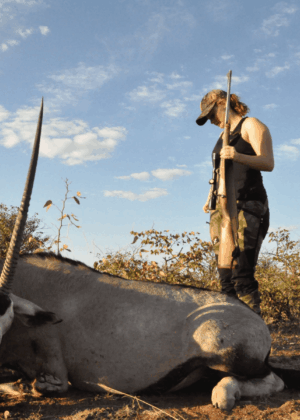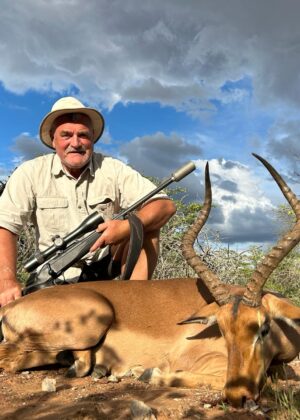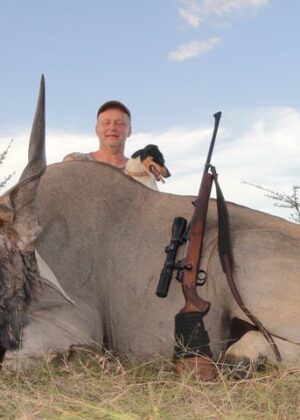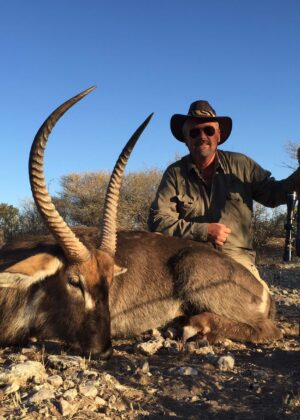Overview
Black-backed Jackal (Canis mesomelas)
The Black-backed Jackal is a clever and highly adaptable predator found throughout southern Africa. Known for its distinctive reddish coat and black "saddle" along the back, this medium-sized canid is both a skilled scavenger and an efficient hunter in its own right.
Often active at night and during early mornings, jackals are opportunistic feeders, preying on small mammals, birds, and carrion. Their sharp senses, cunning behavior, and high-pitched calls make them a familiar yet challenging target.
From a hunting perspective, black-backed jackals are often pursued for predator management, especially around farmlands and game reserves, and they make attractive small predator trophies for collectors.
Suitable
- An Adult (18+) can supervise up to 8 children (6-15 years and over 1.2m).
- Adults can supervise from the ground or up on the course.
- 16-17 year olds do not need supervision.
- Adults who are up for testing their limits in the great outdoors.
Restrictions
- Minimum age: 10 years old
- Maximum weight: 20.5 stone (130kg)
- Designed for those over 13 years old and 7 stone/45kg
- Minimum height: 1.4 metres (4ft 7")
More species
Oryx
Oryx (Oryx gazella)
The Oryx, also known as the Gemsbok, is one of Namibia’s most iconic and sought-after game species. Known for its striking markings, muscular build, and long, spear-like horns, the oryx is a true symbol of strength and resilience in the harsh desert environment.
Highly adapted to arid regions, the oryx can survive extreme heat and go long periods without water. Both males and females carry horns that can reach up to 85 cm (33 in) or more, making careful horn assessment essential for trophy hunting.
For hunters, the oryx offers a challenging and rewarding pursuit — with its tough nature, keen senses, and impressive trophy quality, it is a must-have for any plains game collection.
- Gemsbok
Impala
Impala (Aepyceros melampus)
Graceful and agile, the Impala is one of Africa’s most iconic antelope species. Found across savannas and woodlands, these medium-sized antelope are known for their sleek, reddish-brown coats and impressive leaping ability — they can jump over 3 meters high and up to 10 meters in length!
Often seen in large herds near water sources, impalas are social and alert, making them a favorite sighting on safaris. Males are distinguished by their lyre-shaped horns, while females are hornless.
Whether grazing quietly or bounding through the bush, impalas add elegance and energy to the African wilderness.
- Impala
Eland
Eland (Taurotragus oryx)
The Eland is Africa’s largest antelope, known for its impressive size, gentle nature, and striking appearance. Despite their bulk — with males weighing up to 1,000 kg — elands are surprisingly agile and capable of jumping fences over 2 meters high!
Both males and females have spiral-shaped horns, and their coats range from light brown to greyish-tan with faint white stripes and a distinctive dewlap. Found in savannas, grasslands, and open woodlands, elands are highly adaptable and often move in herds.
Majestic and calm, the eland symbolizes strength and grace — a true giant of the African plains.
- Eland
Waterbuck
Waterbuck (Kobus ellipsiprymnus)
The Waterbuck is a robust and handsome antelope often found near rivers, lakes, and wetlands across sub-Saharan Africa. Easily recognized by its shaggy grey-brown coat and the distinctive white ring on its rump, the waterbuck is closely tied to water — not just for drinking, but also as a refuge from predators.
Males are larger and have long, curved horns, while females are hornless. Waterbuck are social animals, often seen in small herds, and their strong musky scent is a natural insect repellent.
With their majestic build and preference for lush habitats, waterbuck are a memorable highlight on any safari.
- Waterbuck




